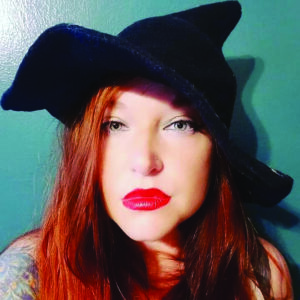by Chris Reeder Young
Tell me a little about yourself and your clinical background.
I am a Licensed Marriage and Family Therapist. My work is trauma informed, culturally sensitive, and deeply motivational. I seek to help people find alignment and balance. Radical authenticity is one of the cornerstones of my work as I practice cultivating creativity and genuineness in every aspect of my personal and professional life. I specialize in work with the LGBTQIA+ community, couples, people of color, and survivors of trauma.
What brought you to the work you do?
I grew up on the southside of Chicago, the last of six siblings. Between both of my parents, they had about 15 siblings and this large family dynamic shaped my upbringing in major ways. My parents grew up poor and experienced intense amounts of trauma as children. I grew up witnessing how family gatherings with siblings could quickly become sources of pain as these meetings would resurface traumas and other difficulties they’d endured as siblings. I also experienced various traumas in childhood that deeply impacted my sense of self and altered my emotional responses to pain. I learned to cope early on with conflict and chaos through emotional distance and I often would escape from my emotions through books and art. These experiences made me curious about the impact of trauma and the family’s response to pain. I learned quickly that my extended family did not know how to work through emotional pain in ways that always led to better outcomes. I became a therapist because I wanted to help families heal any brokenness that was preventing them from loving each other openly.
What is Seasonal Affective Disorder?
Seasonal Affective Disorder, also known as Seasonal Depression, is characterized in the Diagnostic and Statistical Manual IV (DSM-5) as a type of depression with a seasonal quality. Meaning, there is usually a pattern related to the time of year when depression emerges. The depression must have expressed itself during a specific season for at least two consecutive years to establish a pattern. Because of the cyclical nature of SAD, it is important to also understand what life patterns or life anniversaries get stirred up around the same time as well. While SAD can be triggered by the change in season, I have also found that the anniversary challenging events can also trigger seasonal affective disorder.
Ongoing depression seems to not follow a cyclical pattern like Seasonal Affective Disorder. Seasonal Affective Disorder is present only at a specific time of year (e.g., in the fall or winter) and full remission occurs at a characteristic time of year (e.g., spring). People with SAD are more likely to report atypical symptoms, such as hypersomnia, increased appetite, and a craving for carbohydrates, lack of interest in sex, lethargy, hopelessness, or suicidal thoughts.
Who is impacted by SAD?
Seasonal Affective Disorder is most prevalent for those who live in colder climates during the winter months. However, anyone can be impacted by seasonal affective disorder at any time. Climate changes are only one factor that greaten your chances of experiencing seasonal depression. Winter is the natural rest and activity cycle of nature. In a lot of ways, our bodies are set up to rest and hibernate in the winter but because of the way work and society are structured, we are still pushing ourselves out to a job in four feet of snow before the sun has risen or forcing ourselves to be social when it’s below zero outside. All of creation is hibernating and slowing down, even the trees are taking a break, but we are using up so much of our energy to the point of exhaustion all year round rather than taking these important cues. When our work cycles were following agriculture and nature, we structured our years, religious holidays, school calendars, all on nature’s cycles. In the winter our bodies naturally are inclined to longer periods of down time when the days are shorter and there is more night. When life was structured around the seasons and nature, we had incorporated these natural shifts into how we lived our lives and how we made use of our time. Many of us will notice a shift in mood any time our bodies need to slow down and we are not able to oblige due to life demands.
We know that the holiday season can be difficult for our LGBTQ+ family, what are a few things that you can suggest to help them navigate colder holiday months and stay well physically, psychologically, emotionally, and spiritually?
Certain times of year, winter for instance, come along with several major holidays that are about togetherness and celebration, times when many LGBTQIA+ folks are often feeling separated from friends, rejected from family, and experiencing disconnection from community due to other people’s prejudice about their identities. This can lead to exhaustion, sadness, and a lot of other mood shifts for people experiencing these triggers yearly.
How can partners and loved ones support people with SAD?
Loved ones can be the biggest support to those suffering from seasonal depression. I encourage all family members to become knowledgeable about seasonal affective disorder and how it impacts their family members. Then, the biggest thing anyone can do to be supportive is to join others in the self care tips I’ve provided. Not only will it help you feel better, it will help you connect with your family members as they might be struggling.
How can we help our therapist help us?
The best way to help your therapist to support you is by opening up and really sharing the depths of what you’re experiencing. What we don’t reveal, we can not heal. It’s imperative that we be vulnerable in the therapy process. My biggest advice to any client: always complete any “homework” given by the therapist and be extremely self-accountable to your own healing. The therapist is just an advocate and can’t change your life for you but they can help you radically change your own life.
SELF CARE TIPS
1 Spend time with your chosen family. Chosen family may even include some of your own biological family members. Anyone you choose to spend time with should be someone you know loves and supports you.
2 Get some essential oils, some incense, a nice relaxing playlist, and some nice lavender salt to put in the bathtub and enhance your self-care. Your house, your mind, and your body are all homes for you to take care of. Nurture each one and you will notice a change in your mood.
3 Download an emotional support app to your phone for daily self care. My favorite is the Mine’d app where I am an expert. This platform offers daily live sessions led by experts on everything emotional health. Experts answer questions and foster loving community amongst viewers. It’s a great space for emotional support. Get the Mine’d app at moeari.doyoumined.com.
4 Keep your routine as regular as possible. Staying consistent with your daily activities will help to ensure that you remain balanced as you slow down.
5 Vitamin D. Vitamin D is a vitamin that we get from the sun and it regulates a lot of body functions and it helps so many of our organs do their job. Vitamin D deficiency has so many negative side effects, including depressed mood, chronic fatigue, chronic pain, difficulty concentrating, decreased bone health, higher incidence of diabetes and high blood pressure, and more.
6 Rest and don’t take on too much. It’s okay to take some things off your plate when you have less energy. Have grace for yourself and allow yourself the time you need to rest. Then you can go back to being the light that you are.
7 Give therapy a try. Therapy is a beautiful way of allowing yourself to be witnessed by another person. It is a great space to practice self accountability while receiving necessary emotional support.
8 Travel to a warm climate during cooler months if your depression is greatly impacted by climate.
9 Meditation and mindfulness, Reiki or Yoga. Reiki, yoga, meditation have all been proven to decrease stress, align energy centers in the body, and increase mood. Finding a holistic practitioner that can help you to form a body-based healing practice could really help on your journey to wellness.
10 Exercise regularly as it will increase balance and flow while promoting better overall health.
11 Natural teas that help mood like Green Tea, Lemongrass, Ginger, Tumeric, or Oolong.
See more about Moe Arie Brown at theemoeari.com. Follow on Instagram @LoveOutProud and on the Mine’d App at moeari.doyoumined.com. Learn about the CE Courses at theemoeari.com/courses.




